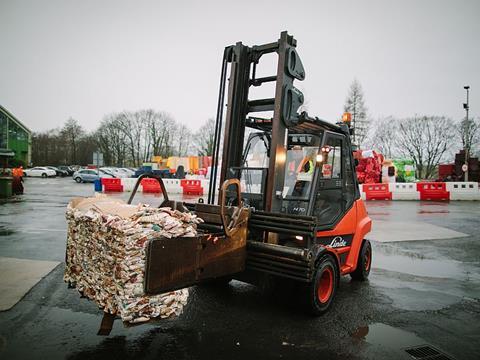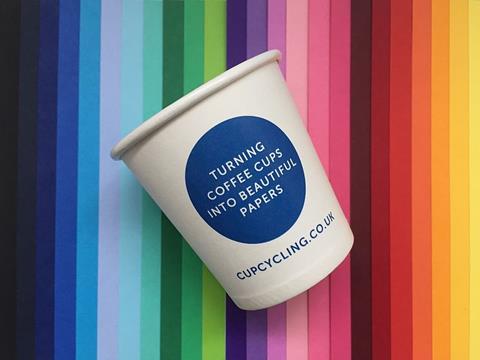
Together with other single use packaging items, single use coffee cups have received negative media attention in recent years. Does this mean that consumers are actually keen to seek out alternatives?
On-the-go coffee consumption varies widely across different countries. According to a survey from NPD and CREST, Japan leads the field with 48 per cent of total coffee orders to go. The USA is not far behind with 45 per cent. In Germany, France and the UK, 17 per cent of all coffee orders are to go. Finally, in Italy and Spain, the figure only amounts to three per cent.
Holger Preibisch, managing director of the German coffee association, highlights a study the association commissioned in 2017, which explores buying the habits of coffee drinkers. It is based on statements by 37,000 regular coffee drinkers, describing 240,000 individual situations in which coffee was drunk.
56 per cent of people surveyed stated that they don’t generally drink coffee to go. Of the remaining groups, 34 per cent say that they drink their coffee from a single use cup, and nine per cent stated that they own a reusable cup they carry around with them.
“Coffee to go consumption decreases with consumer age. Younger consumers are generally more mobile and don’t want to do without their coffee. However, whether or not consumers are likely to use a single use or a reusable cup is not dependent on age. Across all ages, around every fifth person who drinks coffee to go uses a reusable cup,” Mr Preibisch points out.
Convenience trumps environmental concerns

Efforts to get more people to either return or recycle their cups or use their reusable cups have shown some success, but over 60 per cent of coffee to go drinkers say that single use cups are still by far the most convenient solutions for them.
“Users are aware of environmental problems, and only a minority denies that there is a problem,” Mr Preibisch adds. “But single use cups are so convenient that only a quarter of users favour a complete ban. 40 per cent of consumers surveyed even said that they don’t worry about whether a cup is environmentally friendly or not. On the other hand, around 30 per cent of single use cup users have a guilty conscience when using such a cup. 25 per cent of users feel that the environmental problems caused by single use cups are negligible compared to other environmental issues. 21 per cent of coffee drinkers agree with the statement that single use coffee cups should be banned.”
He does however detect growing acceptance for a cup deposit and the introduction of a levy on single use coffee cups from the study:
“60 per cent agree that a deposit on cups would lead to less harm for the environment, and 33 per cent would be willing to go out of their way to return a cup. Setting the deposit at the right price is key to success, however, as 27 per cent state that If the deposit was 15 cents or less they would still throw away their cup. In addition, 42 per cent of consumers would actively prefer to use a single use cup as alternatives are considered too complicated.”
Theory and practice
The study highlights a slowly growing acceptance of non-disposable coffee cups and a levy on single use cups, but many consumers are still hesitant.
“Data from retailers and coffee shops who offer their coffees in single use and reusable cups confirm that customers are still hesitant to choose a reusable cup on a regular basis. Like with so many questions around sustainability, there seems to be a discrepancy between survey results and actual decisions made at the point of sale,” Mr Preibisch observes.
Asked how an ideal reusable cup should look like, Mr Preibisch highlights the importance of usability for hot and cold drinks.
“It should also have a reusable and tightly closing lid and survive at least 300 uses or washes,” he says. “Beyond that it should be made from bio plastics and be 100 per cent recyclable. It would also be great if there was a single system for reusable cups that is available everywhere where coffee is on sale that makes it easy to return the cups there. That would be an ideal model, but unfortunately we don’t live in an ideal cup world.”
A recycling solution
In the UK, paper maker and converter James Cropper has been working on a solution to the disposable cup problem with the launch of CupCycling™, the first recycling process dedicated to upcycling take-away cups. The technology won a Packaging Europe Sustainability Award in 2018. Instead of being landfilled and incinerated, the cups are turned into paper. The CupCycling™ process is progressing smoothly, with James Cropper recently having received the first bales of used coffee cups from a pioneering pilot scheme in collaboration with Forge Recycling, environmental charity Hubbub and Leeds City Council.
“The delivery marks a step in the papermaker’s ambition to help recycle some of the estimated three billion take-away cups that are currently thrown away in the UK each year. CupCycling™ is all about collaboration and is designed as a process to upcycle paper coffee cups. We give more value to the fibre when it is being recycled by upcycling the coffee cup into a beautiful new product. If there is a value to us it also makes it worthwhile for the waste management companies to collect it from coffee retailers and transport hubs,” says James Cropper’s market development manager, Richard Burnett.
“The particular challenge with recycling paper coffee cups is that they are generally lined with polyethylene on the inside. Our unique process removes the lining that makes take-away cups waterproof, while preserving the precious paper fibres. The polyethylene is recycled by our reprocessing partner, and our paper fibres are ready to upcycle. The fibre in a cup is as high quality as you can get in the marketplace, so cups are a great material source if you can get around the problem of polyethylene lining.”
The tip of the iceberg

The process only scratched the surface so far and has large potential for upscaling, Mr Burnett claims:
“To date we recycled around 40 million cups, but we have the capacity to upcycle 500 million cups per year. We have significant capacity available, and it's something we're looking to develop further. We are getting more interest all the time from new businesses who are looking to recycle their materials. It is key to build a market for cups and help people understand that it is a valuable commodity and not something to throw away. One of the challenges we had in the past that there's been some confusion about what could happen to cups and how they could be recycled. Great progress has been made in the last couple of years in terms of in store recycling and available collection points.”
Education and giving consumers a clear message about what can be done with the cups will help motivate them the cup in the right place and avoid the cups ending up in landfill or in nature.
“We are working hard to put the message across by making products we produce visible to consumers. For example, recently we worked with Paperchase on their Sustainable Living range of products. Showcasing what can be made out of cups helps to raise awareness that recycling can make a difference.”
An end to end solution that boosts recycling rates is important to make the system work, according to Mr Burnett.
“We have a close relationship with retailers such as Costa or McDonald's,” he says. “It’s key that they understand what kind of materials we can recycle and to work in partnerships with waste companies. Nothing can be done in isolation. Businesses from different sectors need to work together to be able to solve the issue. The importance of cooperation across the value chain is further underlined by the fact that different types of cups being launched into the market can be problematic for recycling - a different type of coating can pose challenges to recycling. A proliferation of different technologies can have a negative impact on recycling. So with new products being developed for the market, it would be beneficial for the recycling mills to have a dialogue with the businesses developing the technologies to make it work.”

















